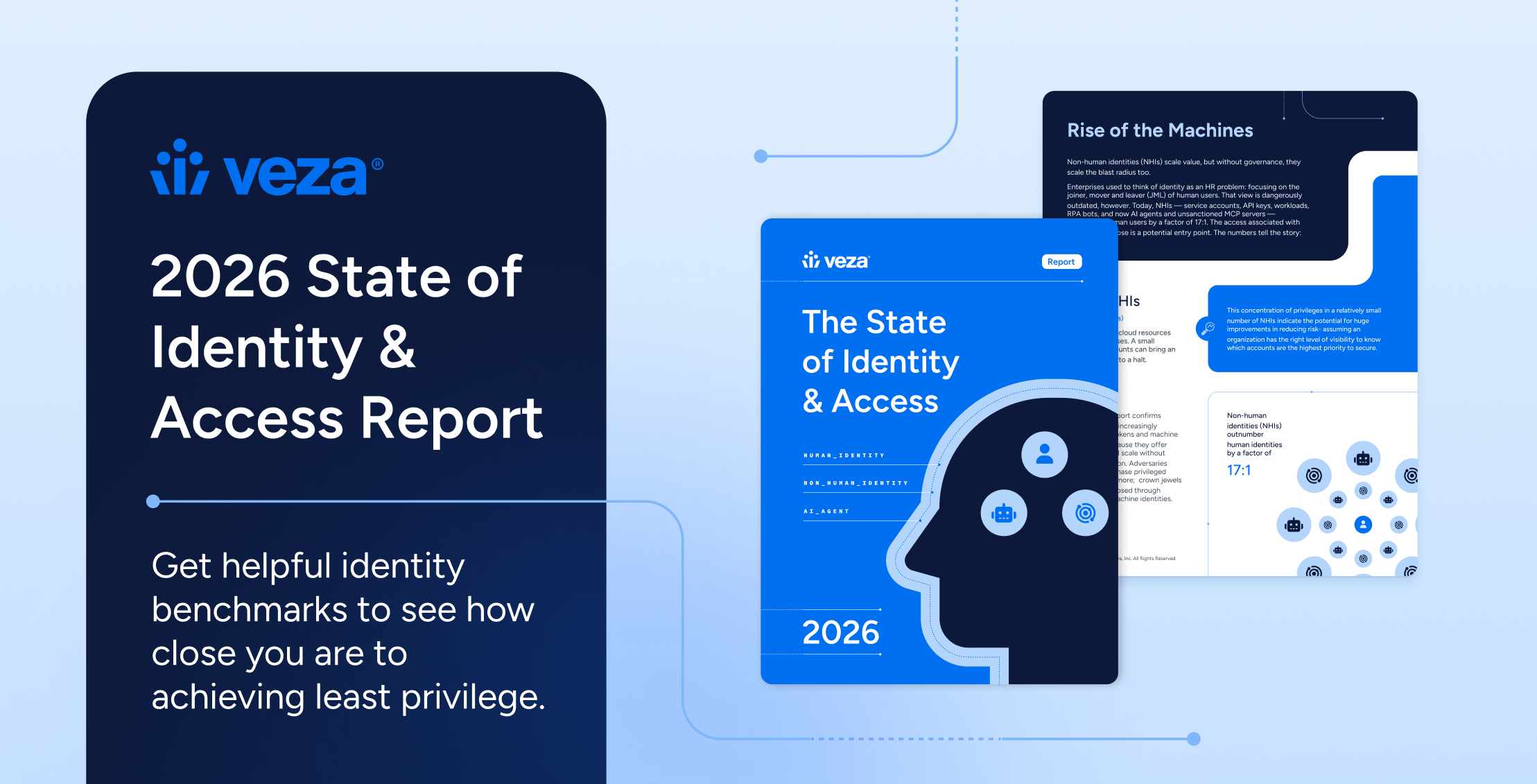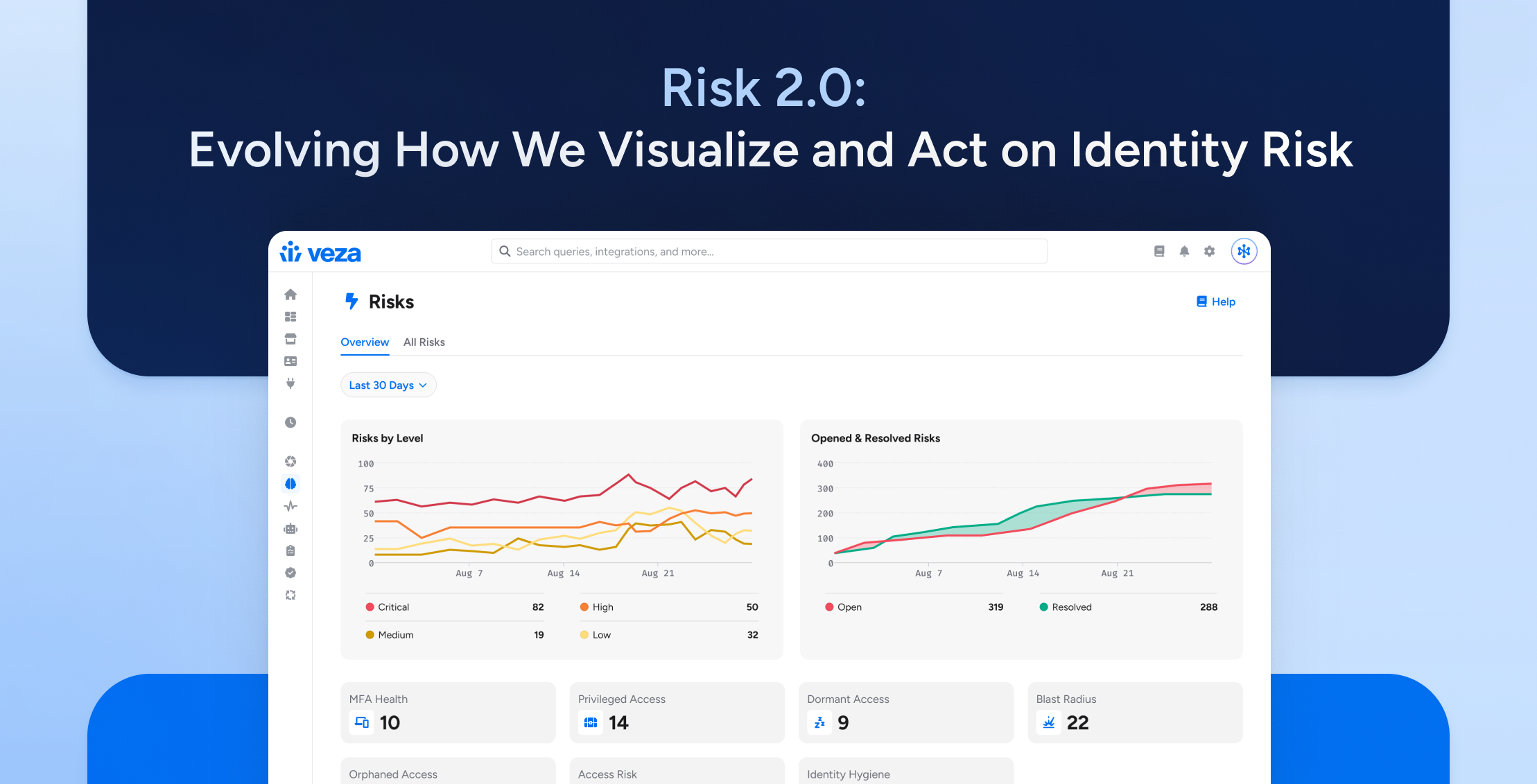
It started – like many breaches do – with a single click.
A contractor opened an invoice email. Seemed legit. Minutes later, an obfuscated script was running in memory. EDR flagged it. SOC triaged it. The laptop was isolated.
Crisis averted, right?
Wrong.
That contractor’s machine had cached credentials. A service account was logged in. And that account had permissions no one remembered assigning: write access to a financial data share, admin rights on a Kubernetes cluster, and access tokens to a third-party billing system.
By the time anyone asked, “Wait, what could that account actually do?”—the damage was done.
This is Where the Story Usually Ends. But It Shouldn’t.
Here’s the real problem: most endpoint protection stops at the machine. Most identity governance tools start with the user. And in between? A dead zone of misconfigured access and invisible privilege.
Security teams live in two different universes:
- Endpoint says, “Malware alert on host XYZ.”
- IAM says, “That’s user ABC. Here’s their group.”
Neither says, “That account can spin up a VM in prod, download payroll data, and create new users in Okta.”
That’s the missing link. That’s the breach window. That’s why Veza and Malwarebytes aren’t just better together—they’re necessary together.
Why Veza + ThreatDown by Malwarebytes Just Makes Sense
This isn’t a story about joint dashboards or cross-selling. It’s about solving a problem security leaders actually lose sleep over: when identities get hijacked, and no one knows what they’re capable of.
Veza gives you the X-ray vision—what access exists, who has it, and whether they should. Malwarebytes’ ThreatDown solutions tell you when a system goes rogue, when behaviour deviates from baseline, and when execution doesn’t match intent.
Put them together, and suddenly, that suspicious PowerShell session on a finance laptop isn’t just a blip—it’s a risk with context.
Real-World Scenarios: Where This Hits Hard
Scenario 1: Suspicious Behaviour with Hidden Impact
- ThreatDown detects script-based lateral movement on a cloud developer’s device.
- Veza reveals the account has active session tokens with write access to a source repo.
- Response is immediate: ThreatDown isolates the machine; Veza disables access across critical systems before code can be pushed.
Scenario 2: Dormant Identity, Active Breach
- ThreatDown sees an unusual login pattern on a system tied to a service account.
- Veza highlights that the account, meant for legacy automation, hasn’t been used in 180 days but still has admin rights in a production database.
- Risk remediated in minutes, not days.
Scenario 3: Non-Human Identity Compromise
- A containerized microservice begins issuing suspicious outbound API calls flagged by ThreatDown.
- Veza flags the service identity’s permissions: overly broad, spanning finance and HR data access.
- Teams instantly isolate both compute and credentials, closing the loop before exfiltration.
This Isn’t “Integration.” It’s Shared Defence.
Veza doesn’t help ThreatDown find malware.
ThreatDown doesn’t help Veza decode entitlements.
But that’s not the point.
Together, they close the dangerous gap between detection and context. Between the “what” and the “so what.”
You get the signal and the scope, without another console or a rip-and-replace.
You see the threat, you know what it can touch, and you can kill it before it spreads.
The Real Story
ThreatDown spots the breach.
Veza shows you the blast radius.
Now your SOC isn’t chasing ghosts—it’s shutting doors.
This is how you stop malware from becoming a breach:
Know what the compromised identity can do, and act before it does.
Hybrid environments, CI/CD pipelines, over-permissioned accounts, and lean teams—this is built for all of it.
No new acronym. No platform drama. Just better decisions in the heat of the moment.
Explore More
- Veza: Want to see how Veza secures access across systems and identities—human and non-human?
👉 Download the Veza Data Security Platform Whitepaper - Malwarebytes: Learn how Malwarebytes’ ThreatDown solutions stop ransomware, fileless malware, and lateral movement before it spreads.
👉 Explore Malwarebytes ThreatDown EDR
About the Authors
This article was developed in collaboration between Matthew Romero, Technical Product Marketing Manager at Veza, and Adam Birgenheier, Manager of Alliances & Strategic Distributions at ThreatDown by Malwarebytes and Vice President of the ISACA Mount Rainier Chapter.
Adam brings a frontline understanding of cybersecurity threats and a strategic view of how to operationalize defence across complex environments. With more than a decade of experience spanning security vendors, managed services, and partner ecosystems, he offers a rare blend of technical credibility and business acumen. His work supporting critical infrastructure, leading national channel programs, and advising through ISACA gives him a grounded perspective on where identity and endpoint protections converge—and where the gaps still lie.
Matthew complements this with a go-to-market focus rooted in real-world customer challenges. At Veza, he helps shape the narrative around identity-first security, connecting technical capabilities to the priorities that keep security teams up at night. His work spans messaging, enablement, and thought leadership for access management, non-human identities, and zero-trust initiatives.
Connect with the authors:
Adam Birgenheier – LinkedIn
Matthew Romero – LinkedIn




